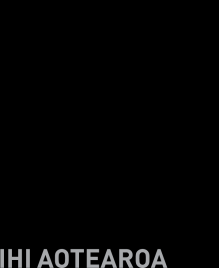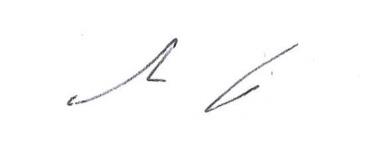

9 September 2022
On Your Behalf
[FYI request #20104 email]
Tēnā koe
Official Information Act 1982 request – data on Concussion in Karate Athletes
This letter responds to your Official Information Act 1982 (OIA) request received on 2 August 2022.
We contacted you to clarify your request on 15 August 2022. You provided your refined request on
22 August 2022. Your refined request is provided below:
•
Is there a record of karate athletes who have sustained a concussion, or suspected
concussion at any Karate New Zealand event. If so, I would like to request the record/s.
•
Are there guidelines about reporting such occurrences (concussion and other head injuries)
in contact sports, specifically karate? If not, why not?
•
Karate New Zealand operates it Premier division competitions under WKF rules. The WKF
Kumite rules state:
"Face Contact - Seniors: For Senior Competitors, non-injurious, light, controlled "touch"
contact to the face, head and neck is allowed (but not to the throat). Where contact is deemed
by the Referee to be too strong, but does not diminish the Competitor's chances of winning,
a warning (CHUKOKU) may be given. A second contact under the same circumstances will
result in KEIKOKU. A further offence will result in HANSOKU CHUI. Any further contact,
although not significant enough to influence the opponent's changes of winning, will still result
in HANSOKU."
Under WKF rules, where it is explicitly stated that excess contact to the face, head or neck
will be penalised, judges have a responsibility to determine the degree of contact. How are
they trained to determine the degree of contact and what training do they have around
identifying head injuries?
We have broken down our response to your request into three parts as follows:
Questions 1: Is there a record of karate athletes who have sustained a concussion, or
suspected concussion at any Karate New Zealand event. If so, I would like to request the
record/s.
Karate NZ do not hold a record of karate athletes who have sustained a concussion, or suspected
P +64 4 472 8058 Level 1, Harbour City Centre, 29 Brandon Street, Wellington 6011
PO Box 2251 Wellington 6140, New Zealand
sportnz.org.nz
2
concussion at any Karate NZ events. This information is collected and held by St John. Previously
St John provided this information to Karate NZ, however their policies have changed in the last three
years, and they no longer provide detailed information to Karate NZ. Athletes and their coaches can
provide this information to Karate NZ on a voluntary basis, but currently there is not reliable reporting.
Any the records held by Karate NZ which have been shared on a voluntary basis, are unable to be
shared with you due to the privacy of individuals. Therefore, we are withholding this in full under
section 9(2)(a) of the Official Information Act, to maintain and protect the privacy of natural persons.
We are satisfied that the withholding of this information is not outweighed by any other circumstances
that render it desirable, in the public interest, to make the information available.
St John is not subject to the Official Information Act 1982 as they are a charitable organisation.
Question Two: Are there guidelines about reporting such occurrences (concussion and other
head injuries) in contact sports, specifically karate? If not, why not?
Karate NZ are working to introduce new ways of reporting concussions and suspected concussions
when participating in events. Karate NZ have been working with St John and their legal department
to ensure this information can be used for entries into events, such as a waiver from St John that
athletes must print and sign, (or if under 18) have a parent or guardian sign on their behalf, this will
allow the information to be released to Karate NZ and added to their database.
Furthermore, all athletes and coaches are encouraged to keep training diaries and present them at
squad or national trainings and report any incidences.
Question 3: Karate New Zealand operates it Premier division competitions under WKF rules.
The WKF Kumite rules state:
"Face Contact - Seniors: For Senior Competitors, non-injurious, light, controlled "touch"
contact to the face, head and neck is allowed (but not to the throat). Where contact is deemed
by the Referee to be too strong, but does not diminish the Competitor's chances of winning,
a warning (CHUKOKU) may be given. A second contact under the same circumstances will
result in KEIKOKU. A further offence will result in HANSOKU CHUI. Any further contact,
although not significant enough to influence the opponent's changes of winning, will still
result in HANSOKU."
Under WKF rules, where it is explicitly stated that excess contact to the face, head or neck
will be penalised, judges have a responsibility to determine the degree of contact. How are
they trained to determine the degree of contact and what training do they have around
identifying head injuries?
Karate NZ have provided the below response in regard to excessive contact:
Article 8: Prohibited behaviour
There are two categories of prohibited behaviour, Category 1 and Category 2.
CATEGORY 1
1. Techniques which make excessive contact, having regard to the scoring area attacked, and
techniques which make contact with the throat.
2. Attacks to the arms or legs, groin, joints, or instep.
3. Attacks to the face with open hand techniques.

3
4. Dangerous or forbidden throwing techniques.
EXPLANATION:
Karate competition is a sport, and for that reason some of the most dangerous techniques are
banned and all techniques must be controlled. Trained adult Competitors can absorb relatively
powerful blows on muscled areas such as the abdomen, but the fact remains that the head, face,
neck, groin and joints are particularly susceptible to injury.
Therefore, any technique, which
results in injury, may be penalised unless caused by the recipient. The Competitors must
perform all techniques with control and good form.
If they cannot, then regardless of the
technique misused, a warning or penalty must be imposed. Particular care must be exercised
in Cadet and Junior competition.
In the case of the rules, ‘warning’ such as Chukoku, Keikoku etc can be interpreted as a “penalty.”
In previous versions of the rules these were referred to as penalties. Accumulation of these warnings
for excessive contact will result in the offending competitor being disqualified.
When a contestant is injured in competition:
The Referee must continue to observe the injured Competitor until the bout is resumed.
In briefing sessions Karate NZ reiterate to officials to check and monitor any player that has received
an injury or contact. Anything that is deemed heavier than skin touch, the doctor or medic should be
called to determine the extent of injury. The referee will defer to the opinion of the medical staff and
will determine the degree of penalty or warning to be implemented.
There are also Tatami managers, the senior referees, who should be monitoring the matches and
will oversee the safe operation of matches.
Karate NZ also have a coaches test that they must pass before sitting in the coaches chair and this
includes questions about recognising the symptoms of concussion. Karate NZ also ask that all
Coaches to be first aid certified.
Please note that if you are not satisfied with this response you have the right to make a complaint to
the Ombudsman under section 28(3) of the OIA.
Yours sincerely
Nicki Ablitt Group Policy Manager
Sport New Zealand Ihi Aotearoa


